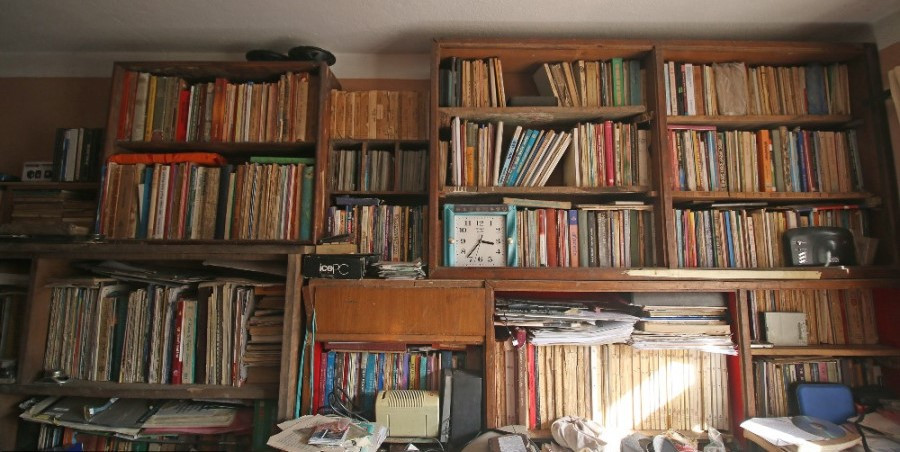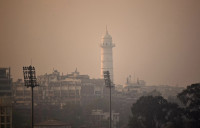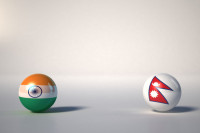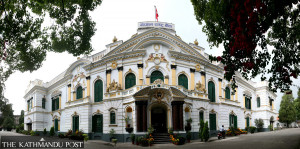Columns
Growing love for books
Book markets in Kathmandu and other major Nepali cities represent the consonance between readers and books.
Abhi Subedi
The enduring love of books in Nepal is something to be happy about. This is also intriguing, considering the country’s state of education. One would naturally be tempted to say that reading books is a luxury that few Nepalis enjoy. The corollary of this would be the sparse availability of books and the small size of the reading public. However, this alone does not explain the reason for the love of books in this country.
Books have continued to dominate the psyche of those who read and those who collect them. As someone who lives in the world of books and formulates a worldview by reading them, it is natural for me to deify the presence of books. I have written essays on books, their availability and the institutionalisation of the reading and learning process. But here I want to present the motifs of discussions about books and their availability that have developed over the years. For that, I have chosen some modalities that reflect the love of books in this land.
First, I want to address a few contradictions regarding the culture of reading and libraries. Until the middle of the last century, Nepali rulers were not fond of reading. The autocratic Rana rule (1846-1950) had no affinity for books. However, Kaiser Shumsher Rana was an exception; he built the Kaiser Library in his palace with a carefully and wisely selected collection of books that included major themes of learning in art, culture, history and literature. The bibliography, carefully catalogued by experts, reveals that books about Nepal or Nepal studies were part of the library’s collection, which struck me. The library’s reputation also crossed the border, with Indian Prime Minister Jawaharlal Nehru and orientalists Percival London and Sylvain Levi visiting the library.
I refer to an annotated bibliography of “works on Nepal in the Kaiser Library” compiled by Thakurlal Manandhar, supervised by Saket B Thakur and edited by Lindsay Friedman, a British linguist, for the Institute of Nepal and Asian Studies (INAS) in 1974. I am stressing on the collection of books on Nepal studies in the private library of the Rana family. It is important to question the reason behind collecting such books in this library when people did not even have access to learning.
Journalist Alisha Sijapati says in her report: “The Kaiser Library, one of Kathmanduʼs few public libraries, is part of the larger Keshar Mahal palace complex and a work of art. Built in 1907 by Chandra Shumsher for his son, Kaiser (Keshar) Shumsher, the library holds over 50,000 books—25,000 of them donated to the Nepal government by Kaiserʼs wife Chandra Devi Rana’ after his death in 1965.” (The Kathmandu Post, April 2, 2019). Why did Chandra Shumsher, who was said to have become sceptic about his wisdom of laying the foundation stone of Tri-Chandra College in 1918, set up a library with important books, including those related to Nepal studies, for his dear son? It is not easy to find the answer to this question.
Next, I want to refer to the annotated bibliography titled “Works on Nepal in the National Library compiled by Thakurlal Manandhar for Institute of Nepal and Asian Studies (INAS) in 1975. It was done as part of meeting a “need for highly academic research to stimulate the quality of education and to provide a real working link between institute of learning and the policy centre of the country”, says SB Thakur, the then project Chief of the documentation centre of INAS. The 2015 earthquake badly damaged Nepal’s first public library. The library also contained the collection of the court pundit or Rajguru, another interesting subject about books and the reading public. I have written about this riddle earlier, under the title “The library blues”: “The greatest irony about books in Nepal is that collecting books remained a passion either of individuals associated with the aristocracy, or of those people who could afford to buy books to keep in good numbers. That they were also scholars holds special significance.” (The Kathmandu Post, February 17, 2019).
The Central Library, located in Kirtipur, a study centre for teachers and students of Tribhuvan University, was shifted from Lal Durbar to university premises. There are other libraries and public ventures, such as Madan Puraskar Pustakalaya of Nepali books, known for their continuity and unique position, worth mentioning.
Now, I want to return to the subject of the love of books in Nepal.
To find a cogent explanation of the love of books in Nepal, we should approach the subject with an open mind. We must begin by asking who the book lovers in Nepal are. The answer is naturally elusive. The government seems responsive to the reading public. This was evident when it lifted the imposed tariffs on books after receiving a huge outcry from readers and booksellers. The unobtrusive public interest in books is conspicuous in many English books on various subjects flowing into Kathmandu’s book market and the consistently growing publication of Nepali books. The passion for books among Nepali academicians can be seen in the diversity of books available in bookstores. The Nepali book markets represent the consonance between readers and books.
Theoretically and practically, readers of the 21st century may not need bookstores to buy books, but the Kathmandu milieu of readers shows that bookstores very much shape it. In the words of Jeff Deutsch, the writer of the famous book In Praise of Good Bookstores (2022), this class is heterodox in nature. He adds, “The bookstore is a haven for the heterodox”. We can see that factor working in Nepal.
Notwithstanding a minuscule reading public, books have always occupied an important place in Nepal. But it is growing consistently. The love of books is all-pervasive that cuts across positions of power and economic status. A search for themes about Nepal studies can be found in the library stories, catalogue titles and heterodox readers.




 10.12°C Kathmandu
10.12°C Kathmandu















